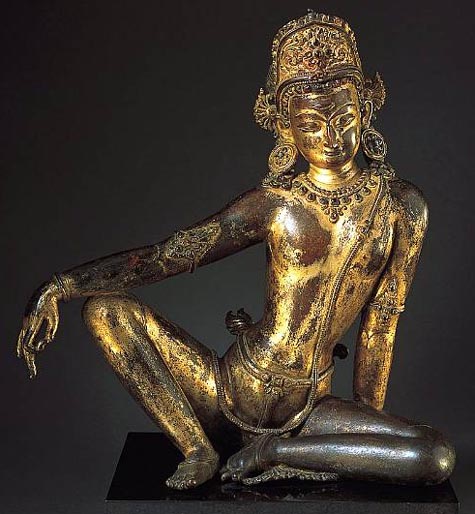 Shri Indra was the favourite national god of the Vedic
Indians, with about 250 hymns dedicated to him in the Rigveda, more
than those devoted to any other god and almost one fourth of the total
number of hymns of the Rigveda.
Shri Indra was the favourite national god of the Vedic
Indians, with about 250 hymns dedicated to him in the Rigveda, more
than those devoted to any other god and almost one fourth of the total
number of hymns of the Rigveda. Shri Indra is the god of thunder, being similar in many ways to the Teutonic Thor (Old Norse Þorr; Old English Þunor; German Donner), or Greek Zeus/Roman Jupiter. Like Thor, he is described in the Rigveda as red- or tawny-beared (RV 10.23,4), though the extant sculpture and carvings seem to invariably show him as beardless. His characteristic weapon is the cudgel vajra ('thunder-bolt'), just as Thor's is the famous hammer Mjöllnir. Shri Indra is the pre-eminent drinker of the divine soma (the madhu or 'mead' of the gods), the imbibing of which exhilerates him and aids him in his heroic actions.
Shri Indra's most important deed is the slaying of the asura ('demon') Vritra, who is a Dragon (ahi). Vritra hoards and encloses the vital elements of the universe: waters, light, cows, and Shri Indra struggled in order to free these life-sustaining treasures from the grasp of the dragon Vritra (whose very name, Vṛtra, means 'the Encloser, the Obstructer') and release them into the world. And he must continually struggle against this Dragon (ahi), who represents the forces of Chaos and Non-Existence (asat).This is why one of Shri Indra's epithets is Vṛtrahan 'slayer of Vritra, overcomer of resistance'. By defeating these forces he separates and supports heaven and earth (RV 5.29). The Norse thunder-god Thor too battles against the midgardsorm ('serpent of Middle-Earth') at various times, as do other Indo-European Storm-Gods, such as the Hittite Tarhunnas (the weather-god) against the dragon Illuyankas.
In his battle with Vritra and other demons, such as Namuci (na-muci 'he who won't release'), his especial friend is Shri Vishnu (RV 1.22,19), who is often described as helping Indra to defeat Vritra. Vishnu's function in the battle with Vritra seems to be primarily to 'make space' by means of his famous three strides, for Indra, about to slay Vritra, says to Vishnu: 'O my friend Vishnu, stride out widely' (RV 4.18,11). The association of Arjuna (son of Indra) and Shri Krishna (avatara of Vishnu), especially in their companionship during the Mahabharata battle, is thus prefigured by this association of Shri Indra and Vishnu.
By worship and sacrifice (especially soma-sacrifice, as soma-drinking increases Indra's strength and vigour), humans on earth help Indra in his struggles, e.g.:
'Sacrifice, Indra, made you grow so mighty, the dear oblation with the pressed soma.
O Worshipful, with sacrifice help our sacrifice, for sacrifice helped your vajra when slaying the dragon'.
(Rigveda 3.32,12; cf. RV i.63,2)
O Worshipful, with sacrifice help our sacrifice, for sacrifice helped your vajra when slaying the dragon'.
(Rigveda 3.32,12; cf. RV i.63,2)
See further below on soma-sacrifice.
.......

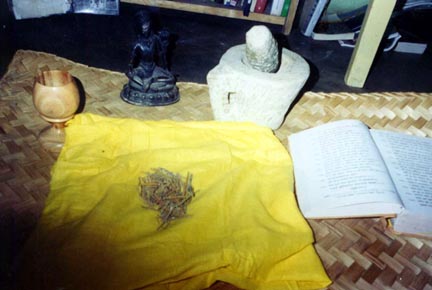
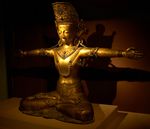
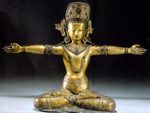
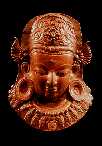

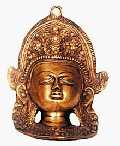
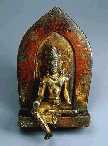
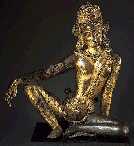
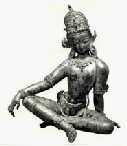

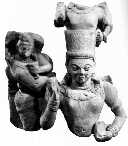
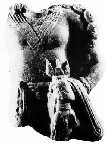
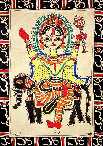
![Indra on Airavata (vahana]](indra%20on%20airavata%20%28modern%20drawing-painting%29.jpg.thmb.jpg)
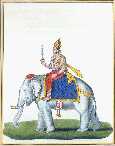
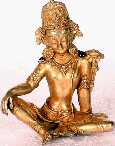
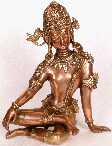
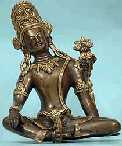
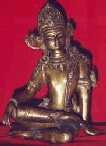
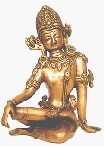
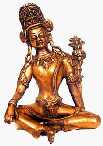



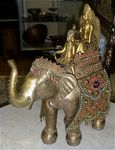
 [Thumb].jpg)
![Indra with vajra [kushaana period, mathura]](indra-mathura%20%28village%20tarsi%29-sculpture-with%20vajra%20%28kushaana%20period%29.jpg)